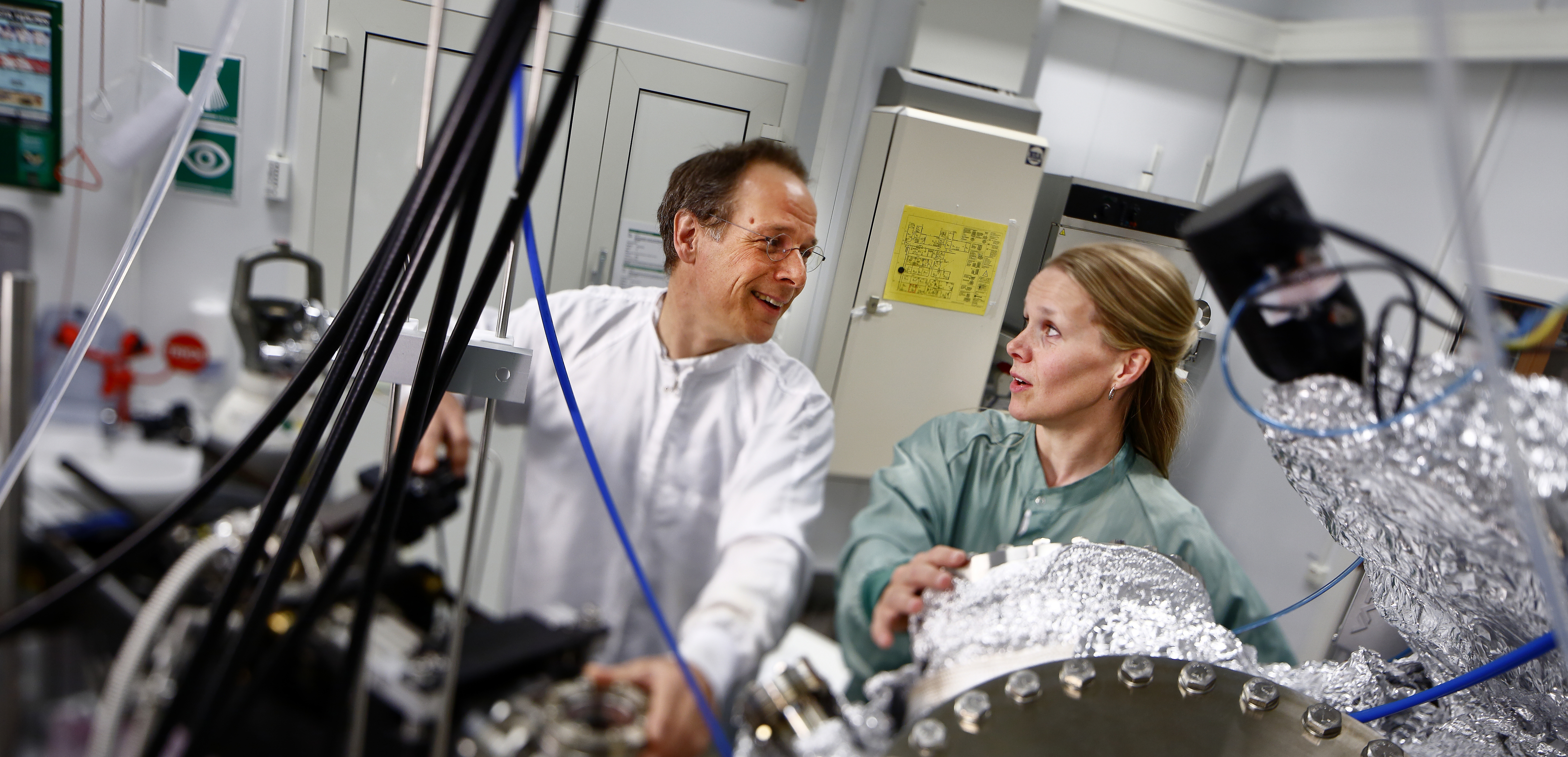This is a large research area at LiU. It includes many aspects, from various methods to manufacture thin films and how a particular method influences the properties of the material manufactured, to creating surfaces with tailored properties for the requirements of industry.
The research ranges from basic research into fundamental correlations to applied research in close collaboration with industry. Examples are the design of multifunctional materials, hard and wear-resistant coatings, magnetic materials, neutron detectors for the European Spallation Source, and large band-gap semiconductors. The work of several research groups has resulted in spin-off companies.
Electron microscopy
The scientists use advanced electron microscopy to study both the structure and chemical properties of materials, for example MAX phases, 2D materials such as MXene and graphene, large band-gap semiconductors, and several nanostructures, such as nitrides, carbides and borides used to create superhard surfaces.
Fundamental science
The researchers investigate fundamental physical phenomena in thin films and how the method of manufacture influences not only the atomic structure but also the interactions between atoms in advanced materials.
Materials design
In the LiU laboratory, thin films are built up atom by atom with the goal of being able to monitor and control the hardness, conductivity, magnetic properties, opacity, strength, etc. The work looks at the properties at the surface, but includes the properties that arise in the contact surface between the applied thin film and the bulk material.
Nanostructures
The research group studies the nanostructures of materials in order to gain fundamental knowledge concerning the various properties that the different nanostructures give rise to. The group focusses on materials with possible industrial applications, one example of which are wear-resistant surfaces for cutting tools.
Materials optics
Optical properties are studied in thin films of polymers and in porous and biological materials. The work looks at the optical properties of materials and combines this with biological research. Optical phenomena in the natural world, such as the metallic cuticle of certain beetle species, are studied and modelled. One goal of the research is to use this phenomenon to manufacture clothes or paints that make a person or object invisible.
Surface physics
The research group studies and develops models for the interaction between thin surfaces, relating not only to the combination of organic and inorganic materials, but also to the combination of several different organic materials. Applications here are found in, for example, organic solar cells.



